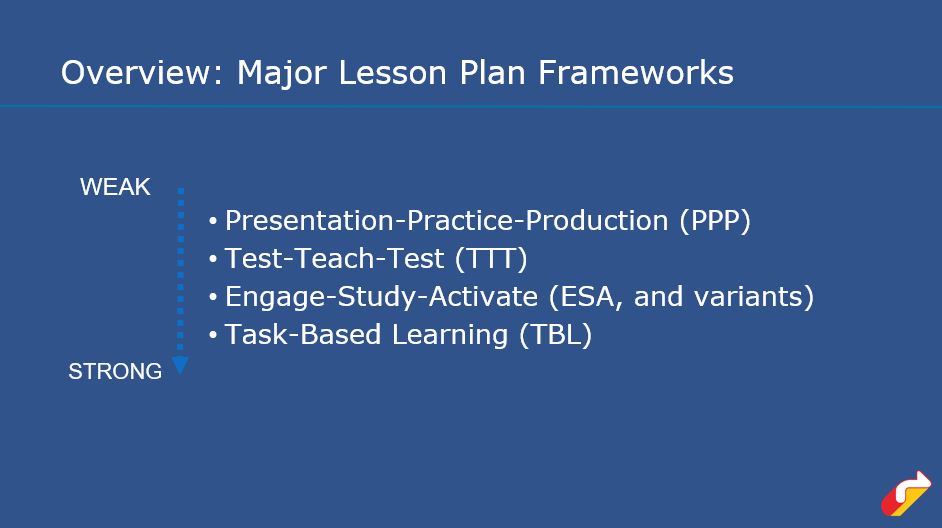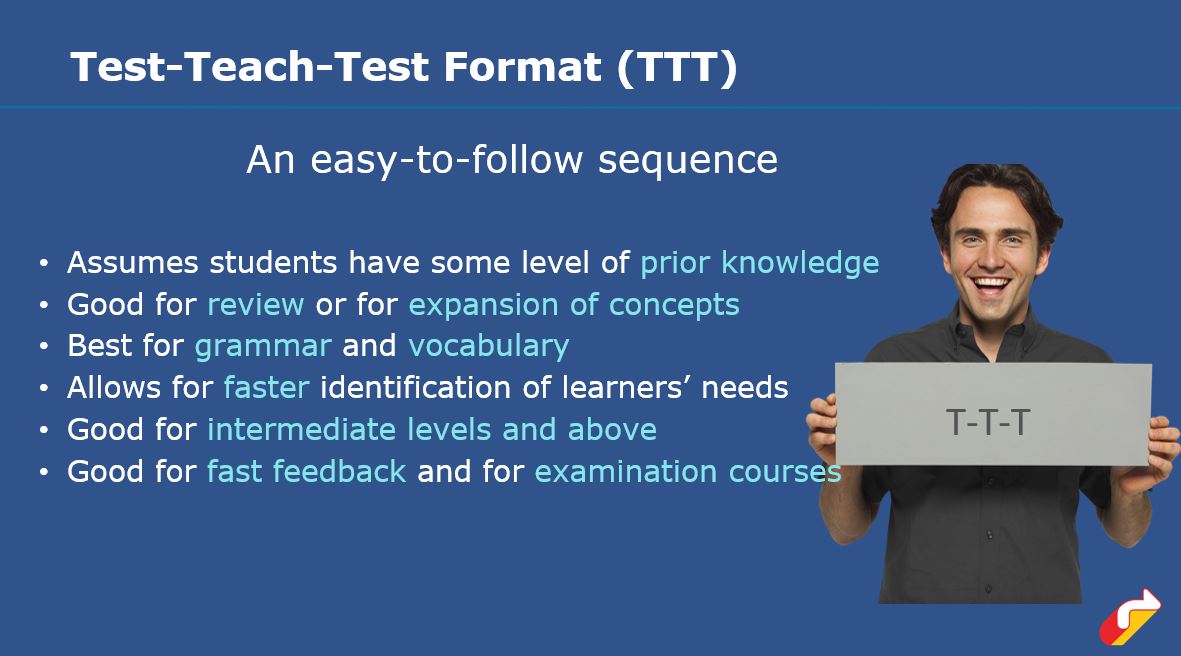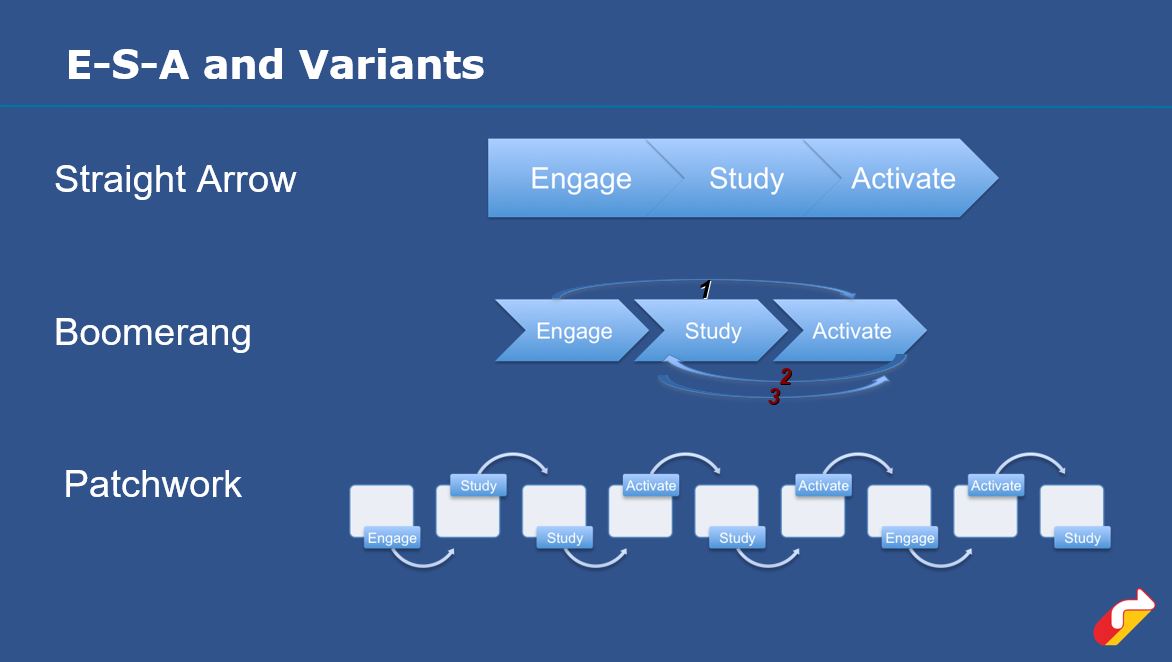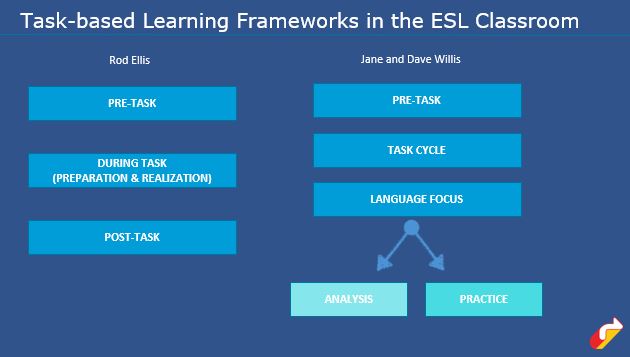ESL Lesson Planning Frameworks
What are ESL lesson planning frameworks?
ESL lesson planning frameworks are step-by-step structures that support teachers in meeting linguistic and communication goals in the classroom. There are various frameworks that are applied for different language aims, class levels and needs. Under the umbrella of Communicative Language Teaching (CLT) approaches, the four dominant ESL lesson planning frameworks are PPP, TTT, ESA, and TBL.
In terms of their adherence to communicative principles, these frameworks are considered to progress from “weak” to increasingly “strong” communicative teaching approaches. This continuum is largely determined by the degree of structure in presenting and analyzing language – and, by extension, the degree of freedom in applying the language in a communicative way.

Presentation-Practice-Production (PPP)
The roots of PPP go back farther, but this framework was mainly developed as the shift to CLT began in earnest, in the 1970s. This framework is the one most commonly used in course books, especially for lower levels. As a result, it is an ESL lesson planning framework that teachers need to master before setting foot in a classroom. Course books do not always explicitly lay out the underlying linguistic aims of the activities in them. With a solid understanding of PPP, teachers can easily piece together the intentions of course book material and deliver much more effective lessons.

PPP is the most structured of the common CLT lesson planning frameworks. Its structure and predictability make it very useful for teaching grammar at lower levels. New and complex concepts (like grammar) are difficult for beginner learners to master; they need to be able to take in and process these new ideas at a “digestible” pace and volume. The PPP framework provides a high degree of scaffolding and very deliberate steps. This scaffolding accommodates both real-life language use contexts and opportunities for students to figure out grammar structures. The framework includes systematic presentation and practice work, guiding students to a clear understanding of the language through concept questioning and clear systematization. Every lesson requires the use of the productive skills (speaking and/or writing), which allows students to practice newly-learned language in a meaningful and memorable way.
Test-Teach-Test (TTT):
The Test-Teach-Test framework is also a reasonably structured one. Its central precept is that students’ knowledge of a target language point is assessed in some way (the first T in the TTT sequence: a test). The result of that initial test is targeted teaching (the second T in the TTT sequence: teach) that will either address any shortfall uncovered in the initial test work or add to the proven knowledge base that for which the test was the proven baseline. That teaching work is followed by another test activity, which will indicate the success of the previous step.

This framework requires a reasonable degree of prior knowledge. We cannot begin by testing students if they haven’t been taught yet. As a result, the TTT framework is not suitable for beginner levels. The quantity of testing in the framework also means that it is well-suited for test preparation work. This framework is popular in courses that are targeted at helping students achieve higher scores in standardized tests (like IELTS or TOEFL, for example).
Engage Study Activate (ESA):
PPP has been the dominant framework for some decades. It is clearly useful and popular, but its strength is also a weakness: its highly structured nature means that it is not highly adaptable. As a means of addressing the shortcomings of PPP (and other teaching approaches), Jeremy Harmer posited an approach that he called ESA, for Engage-Study-Activate. This framework allows for much greater variety in the steps. The framework acknowledges that lessons will alternate among these three broad categories of activity: engaging students in a communicative topic; studying relevant language points; and activating language skills in order to achieve a communication goal.

The ESA framework allows a lot of flexibility in the ordering of activities. The requirement is always to begin with an Engage phase: an activity that establishes the context for the lesson and gets students interested. Beyond that, it can accommodate an almost endless variety of steps. A lesson could have, for example, multiple Activate phases, followed by some Study phase work, followed by an additional Activate phase. There is not an obligatory order or number of steps or phases. This framework can, therefore, satisfy a wide range of lesson types. It can be used to design Study-heavy lessons that are very focused on language details. Its primary intention, though, is to enable the inclusion of genuine communication work within any lesson (Activate phase work). With that as the thrust of the lessons, it retains an ability to integrate any necessary language-focused elements.
Task-Based Learning (TBL):
Task-based learning centers lessons around a (non-language-focused) task. In effect, students are doing something while using language, as opposed to using language in order to do something. The driver of the lesson’s work is the central task. Explicit language focus, if any, is only incorporated after the core task is complete. The types of tasks that a TBL lesson might be based upon would be things like organizing an event, conducting an everyday transaction or doing a survey. The top goal is the communication work; this is why it is considered to be the strongest of the CLT lesson planning frameworks.

The TBL framework is particularly popular in environments where the educational goal is competence in everyday skills in an English-speaking milieu. In Canada, for example, TBL is dominant in many government-sponsored ESL programs, where the goal is enabling students to become competent in quotidian activities in English. The emphasis is on doing the task (often focusing on so-called “survival skills” and practical everyday activities) more than fluency and accuracy of the language. Language details can be covered, but it is not a requirement in this framework.
NEW! Get all the benefits of an interactive in-class TEFL / TESOL course with live lessons via Zoom. The 168-hour Hybrid TEFL Certificate combines self-paced training with the 10-hour ESL Lesson Planning Workshop and our most popular specialist courses.


